Test: Line Charts (March 13) - CAT MCQ
10 Questions MCQ Test Daily Test for CAT Preparation - Test: Line Charts (March 13)
Instructions: The following chart gives the average of marks in six subjects scored by 25 students in three different exams conducted in an academic year.
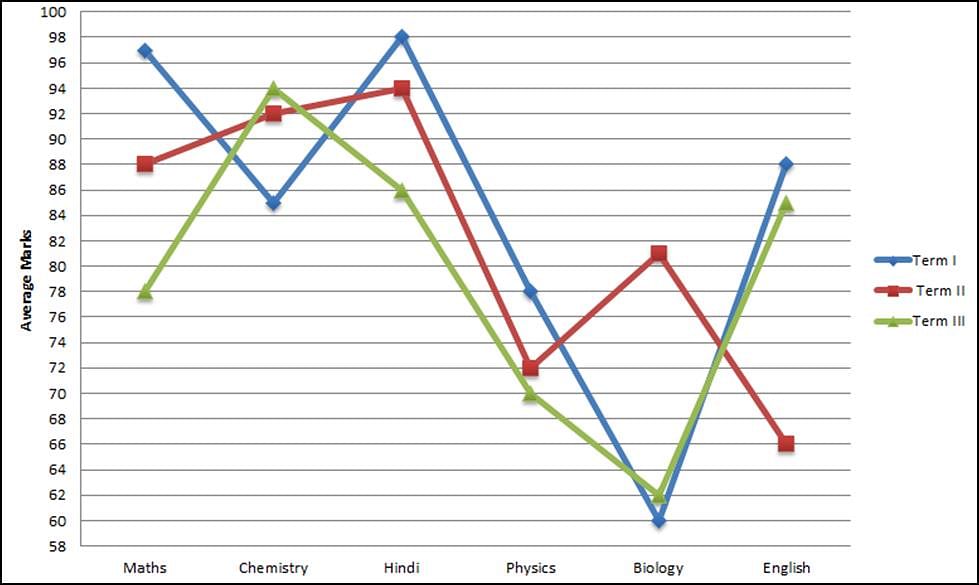
The maximum marks of the exam is 100 and a student who scores at least 35 marks is
considered as passed.
Q. What could be the maximum number of students that failed in all the exams in all the three terms?

The maximum marks of the exam is 100 and a student who scores at least 35 marks is
considered as passed.
Instructions: The following chart gives the average of marks in six subjects scored by 25 students in three different exams conducted in an academic year.
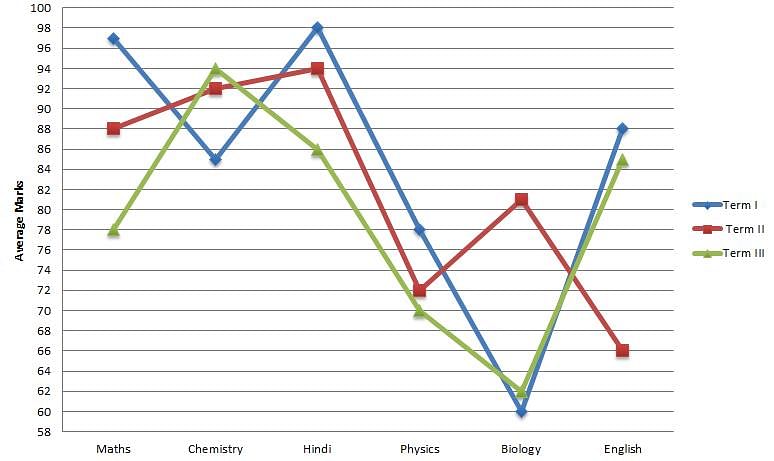
The maximum marks of the exam is 100 and a student who scores at least 35 marks is
considered as passed.
Q. The number of students who failed in all the subjects in the IInd term cannot be more than?

The maximum marks of the exam is 100 and a student who scores at least 35 marks is
considered as passed.
Instructions: The following chart gives the average of marks in six subjects scored by 25 students in three different exams conducted in an academic year.
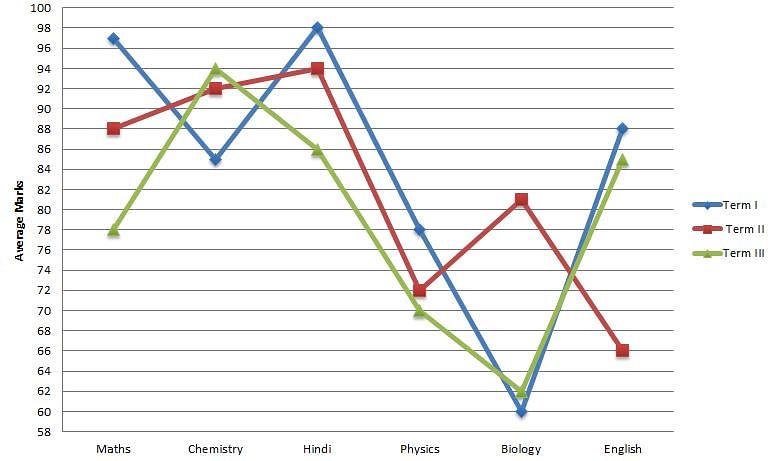
The maximum marks of the exam is 100 and a student who scores at least 35 marks is
considered as passed.
Q. The number of students that scored more than 80 marks in all the subjects in all the term cannot be more than

The maximum marks of the exam is 100 and a student who scores at least 35 marks is
considered as passed.
Instructions: Refer to the following graphs and answer the given questions:
Graph I gives the percentage of people committing crimes each year in Boselvania and graph II gives the percentage increase in the population of Boselvania each year compared to the previous year.
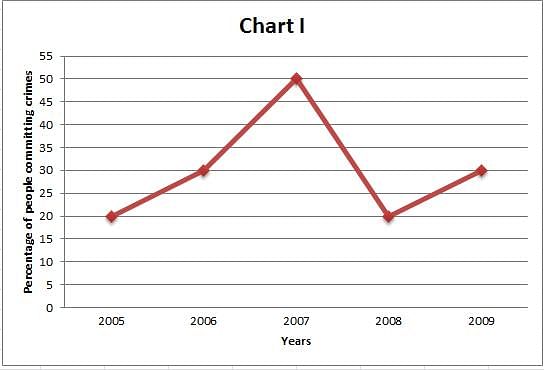
Q. In which year among the given years(from 2005-2009) was the number of people that committed crimes the the second lowest?
Instructions: Refer to the following graphs and answer the given questions:
Graph I gives the percentage of people committing crimes each year in Boselvania and graph II gives the percentage increase in the population of Boselvania each year compared to the previous year.
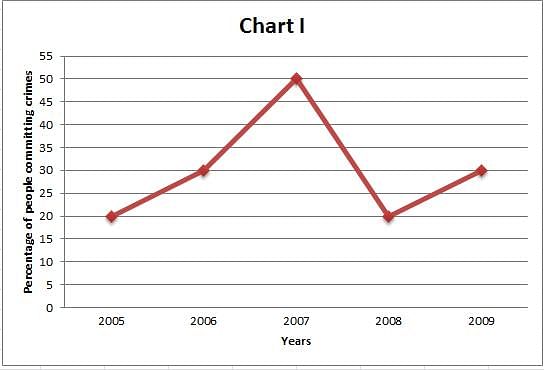
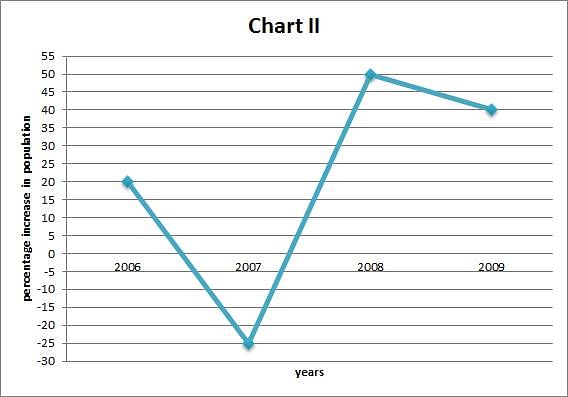
Q. In which year among the given years (2005-2009) was the population in Boselvania the third highest?
Practice Quiz or MCQ (Multiple Choice Questions) with solutions are available for Practice, which would help you prepare for "Line Charts" under LR and DI. You can practice these practice quizzes as per your speed and improvise the topic. The same topic is covered under various competitive examinations like - CAT, GMAT, Bank PO, SSC and other competitive examinations.
Q.
The following line graph gives the ratio of the amounts of imports by a company to the amount of exports from that company over the period from 1995 to 2001.
If the imports in 1998 was Rs. 250 crores and the total exports in the years 1998 and 1999 together was Rs. 500 crores, then the imports in 1999 was ?
The following line graph gives the ratio of the amounts of imports by a company to the amount of exports from that company over the period from 1995 to 2001.
The imports were minimum proportionate to the exports of the company in the year ?
The following line graph gives the ratio of the amounts of imports by a company to the amount of exports from that company over the period from 1995 to 2001.
What was the percentage increase in imports from 1997 to 1998 ?
The following line graph gives the ratio of the amounts of imports by a company to the amount of exports from that company over the period from 1995 to 2001.
If the imports of the company in 1996 was Rs. 272 crores, the exports from the company in 1996 was ?
The following line graph gives the ratio of the amounts of imports by a company to the amount of exports from that company over the period from 1995 to 2001.
In how many of the given years were the exports more than the imports ?
|
152 docs|327 tests
|




















